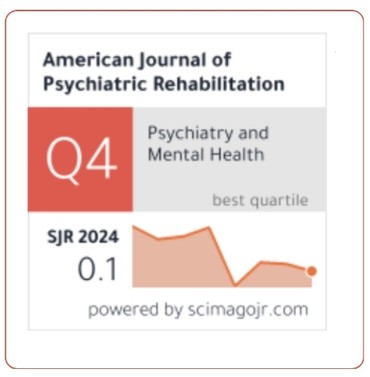Role of MRI in Assessment of First Seizures in Pediatric Patients
DOI:
https://doi.org/10.69980/ajpr.v28i5.335Keywords:
Pediatric Seizures; First-Time Seizure; MRI; Neuroimaging; Epilepsy; Brain Imaging, Children; Diagnostic Evaluation; Structural Abnormalities.Abstract
Background: When a Pediatric patient has their first seizure, it's a medical emergency that calls for immediate answers about what's causing it. MRI shines as the go-to apparatus for spotting brain anomalies linked to these episodes.
Objective: This review digs into when doctors should order an MRI, the best timing for it, what it typically reveals, and why it matters for pediatric having their first seizure, whether triggered or not.
Methods: The scoured studies from 2015 to 2025, zeroing in on research about MRI findings in Pediatric patient aged 1 month to 18 years who had a first-time seizure.
Results: Doctors often turn to MRI when seizures start in one part of the brain, when neurological exams raise red flags, or when recovery takes too long. It frequently uncovers issues like malformed brain tissue, tumors, scarring in the temporal lobe, or damage from lack of oxygen. These discoveries guide decisions about surgery or diagnosing epilepsy.
Conclusion: MRI is a game-changer for figuring out what’s behind a pediatric’s first seizure, especially when signs point to something serious. Smart imaging strategies and pediatric-friendly sedation make it both effective and safe.
References
1. Camfield P, Camfield C. Incidence, prevalence and aetiology of seizures and epilepsy in children. Epileptic Disord. 2015;17(2):117-123. doi:10.1684/epd.2015.0736
2. Gaillard WD, Chiron C, Cross JH, et al. Guidelines for imaging infants and children with recent-onset epilepsy. Epilepsia. 2009;50(9):2147-2153. doi:10.1111/j.1528-1167.2009.02075.x
3. Pearce MS, Salotti JA, Little MP, et al. Radiation exposure from CT scans in childhood and subsequent risk of leukaemia and brain tumours: a retrospective cohort study. Lancet. 2012;380(9840):499-505. doi:10.1016/S0140-6736(12)60815-0
4. Berg AT, Berkovic SF, Brodie MJ, et al. Revised terminology and concepts for organization of seizures and epilepsies: report of the ILAE Commission on Classification and Terminology, 2005–2009. Epilepsia. 2010;51(4):676-685. doi:10.1111/j.1528-1167.2010.02522.x
5. Scheffer IE, Berkovic S, Capovilla G, et al. ILAE classification of the epilepsies: position paper of the ILAE Commission for Classification and Terminology. Epilepsia. 2017;58(4):512-521. doi:10.1111/epi.13709
6. Widjaja E, Raybaud C. Imaging of pediatric epilepsy. Neuroimaging Clin N Am. 2017;27(4):611-626. doi:10.1016/j.nic.2017.06.004
7. Shinnar S, Bello JA, Chan S, et al. MRI abnormalities following febrile status epilepticus in children: the FEBSTAT study. Neurology. 2012;79(9):871-877. doi:10.1212/WNL.0b013e318266fcc5
8. Krumholz A, Wiebe S, Gronseth GS, et al. Evidence-based guideline: management of an unprovoked first seizure in adults. Neurology. 2015;84(16):1705-1713. doi:10.1212/WNL.0000000000001487
9. Pohlmann-Eden B, Newton M. First seizure: EEG and neuroimaging. Neurology. 2011;76(7 Suppl 2):S24-S28. doi:10.1212/WNL.0b013e31820d9668
10. Hirtz D, Ashwal S, Berg A, et al. Practice parameter: evaluating a first nonfebrile seizure in children. Neurology. 2000;55(5):616-623. doi:10.1212/WNL.55.5.616
11. Harden CL, Huff JS, Schwartz TH, et al. Reassessment: neuroimaging in the emergency patient presenting with seizure. Neurology. 2007;69(18):1772-1780. doi:10.1212/01.wnl.0000278118.00982.57
12. Wilmshurst JM, Gaillard WD, Vinayan KP, et al. Summary of recommendations for the management of infantile seizures: Task Force Report for the ILAE Commission of Pediatrics. Epilepsia. 2015;56(8):1185-1197. doi:10.1111/epi.13057
13. Ramey WL, Martirosyan NL, Lieu CM, et al. Current management and surgical outcomes of medically intractable epilepsy. Clin Neurol Neurosurg. 2013;115(12):2411-2418. doi:10.1016/j.clineuro.2013.09.008
14. Barkovich AJ, Raybaud C. Pediatric Neuroimaging. 6th ed. Wolters Kluwer; 2019.
15. Andre JB, Bresnahan BW, Mossa-Basha M, et al. Toward quantifying the prevalence, severity, and cost associated with patient motion during clinical MR examinations. J Am Coll Radiol. 2015;12(7):689-695. doi:10.1016/j.jacr.2015.03.007
16. Knake S, Triantafyllou C, Wald LL, et al. 3T phased array MRI improves the presurgical evaluation in focal epilepsies. Neurology. 2005;65(7):1026-1031. doi:10.1212/01.wnl.0000179355.04481.3c
17. Barkovich AJ, Guerrini R, Kuzniecky RI, et al. A developmental and genetic classification for malformations of cortical development: update 2012. Brain. 2012;135(Pt 5):1348-1369. doi:10.1093/brain/aws019
18. Krsek P, Maton B, Korman B, et al. Different features of histopathological subtypes of pediatric focal cortical dysplasia. Ann Neurol. 2008;63(6):758-765. doi:10.1002/ana.21398
19. Guerrini R, Dobyns WB. Malformations of cortical development: clinical features and genetic causes. Lancet Neurol. 2014;13(7):710-726. doi:10.1016/S1474-4422(14)70040-7
20. Koeller KK, Rushing EJ. From the archives of the AFIP: medulloblastoma and other cerebellar tumors in children. Radiographics. 2003;23(5):1155-1179. doi:10.1148/rg.235035047
21. Rowland NC, Englot DJ, Cage TA, et al. A meta-analysis of predictors of seizure freedom in the surgical management of focal cortical dysplasia. J Neurosurg. 201 J Neurosurg. 2012;116(5):1035-1041. doi:10.3171/2012.1.JNS111105
22. Friedlander RM. Arteriovenous malformations of the brain. N Engl J Med. 2007;356(26):2704-2712. doi:10.1056/NEJMcp067192
23. Ding D, Starke RM, Kano H, et al. International multicenter cohort study of pediatric brain arteriovenous malformations. J NeurosurgPediatr. 2017;19(2):139-148. doi:10.3171/2016.9.PEDS16283
24. Tunkel AR, Glaser CA, Bloch KC, et al. The management of encephalitis: clinical practice guidelines by the Infectious Diseases Society of America. Clin Infect Dis. 2008;47(3):303-327. doi:10.1086/589747
25. Whitley RJ. Herpes simplex encephalitis: adolescents and adults. Antiviral Res. 2006;71(2-3):141-148. doi:10.1016/j.antiviral.2006.04.002
26. Magnetic Resonance Imaging (MRI). (n.d.). National Institute of Biomedical Imaging and Bioengineering. Retrieved May 14, 2023, from https://www.nibib.nih.gov/science-education/science topics/magnetic-resonance-imaging-mri
Downloads
Published
Issue
Section
License
Copyright (c) 2025 American Journal of Psychiatric Rehabilitation

This work is licensed under a Creative Commons Attribution 4.0 International License.
This is an Open Access article distributed under the terms of the Creative Commons Attribution 4.0 International License permitting all use, distribution, and reproduction in any medium, provided the work is properly cited.









